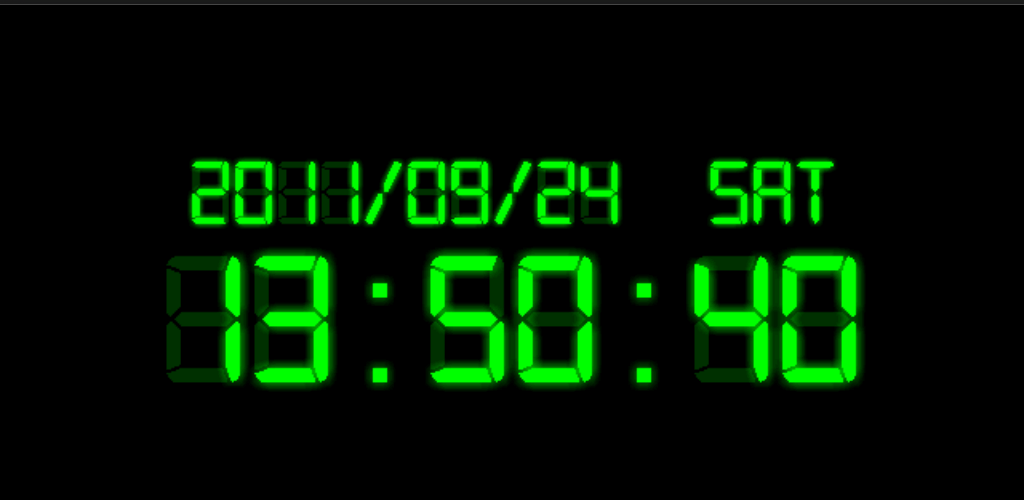

- Tiny digital clock Patch#
- Tiny digital clock full#
- Tiny digital clock plus#
- Tiny digital clock download#
Tiny digital clock full#
USCCE Small LED Digital Alarm Clock with Snooze, Easy to Set, Full Range Brightness Dimmer.ĭigital Clock Large Display Alarm Clock for Living Room Office Bedroom Decor LED Electronic Date.

Tiny digital clock plus#
WulaWindy Mini Digital Alarm Clock, 3 Alarm Settings, 12/24Hr, Snooze, Controls Alarm Volume and.įrienda 3 Pieces Mini Car Clock Car Dashboard Clock Auto Car Truck Dashboard Time Vehicle Electronic.ĭreamSky Compact Digital Alarm Clock with USB Port for Charging, 0-100% Brightness Dimmer, White.īetus Digital Travel Alarm Clock - Foldable Calendar Temperature Timer LCD Clock with Snooze Mode -.ĭigital Alarm Clock, with Wooden Electronic LED Time Display, 3 Dual Plus Alarm, 2.5-inch Cubic. PEAKEEP Smart Night Light Digital Alarm Clock with Indoor Temperature, Battery Operated Desk Small.
Tiny digital clock download#
I have been waiting so long to share this, and it is finally time! Do you want to see THE BIGGEST IMAGE #JWST has taken of galaxies so far?! Our color mosaic image from is ready, and there are SO MANY GALAXIES in it! Download it here & ZOOM IN Car Dashboard Digital Clock - Vehicle Adhesive Clock with Jumbo LCD Time & Day Display - Mini.ĭigital Alarm Clock, LED Clock for Bedroom, Electronic Desktop Clock with. A chance alignment of a z = 0.63 galaxy with a tidal tail, and a grouping of red galaxies at z = 1.85.Another spiral galaxy, also at z = 0.7, again highlighting JWST’s ability to resolve small-scale features even for modestly distant galaxies.The arrow points to a supernova discovered with these JWST images. Two interacting spiral galaxies at z = 0.7.An interacting system of galaxies at z = 1.4, dubbed the “Space Kraken” by the CEERS team.A chance alignment of a bright galaxy at a redshift z = 1.05 with several smaller galaxies forming an arc in the sky when viewed from JWST.The resolution of the JWST imaging reveals a large number of blue star-forming clumps and star clusters. A spiral galaxy at a redshift of z = 0.16.In the image above, the CEERS team has identified some of the most interesting objects in Epoch 1. Yes, even more than Webb’s already amazing deep field picture.Ĭredit: NASA/STScI/CEERS/TACC/S.
Tiny digital clock Patch#
These come from a tiny patch of sky near the handle of the big dipper, but there are still so, so many galaxies visible. The new data release is just the first part, which includes four of the ten planned observational blocks. The project is divided into two parts known as Epoch 1 and Epoch 2. The CEERS Survey intends to demonstrate, test, and validate methods of extragalactic observations using three of the Webb telescope’s primary instruments: NIRCam, MIRI, and NIRSpec. The full-resolution images are hundreds of megabytes in size and contain more galaxies than you can imagine. This project has just released an incredible deep space mural known as Epoch 1. And it’s only been operating for a few months! If the latest data release from the Cosmic Evolution Early Release Science Survey (CEERS) is any indication, Webb has only shown us a hint of what it can do.

It has surveyed distant nebulae, traced veins of dust in ancient galaxies, and peered back in time billions of years. NASA’s James Webb Space Telescope has been making history at every opportunity since it came online earlier this year.


 0 kommentar(er)
0 kommentar(er)
